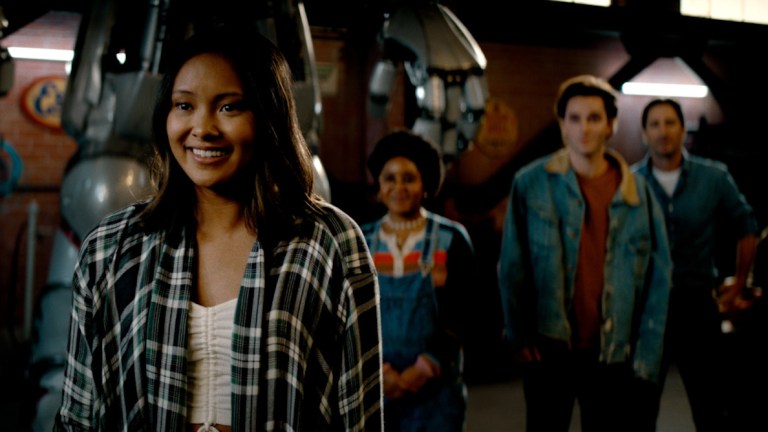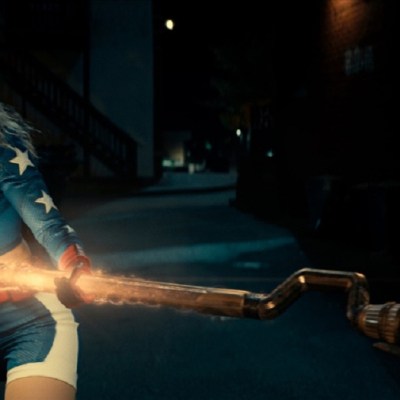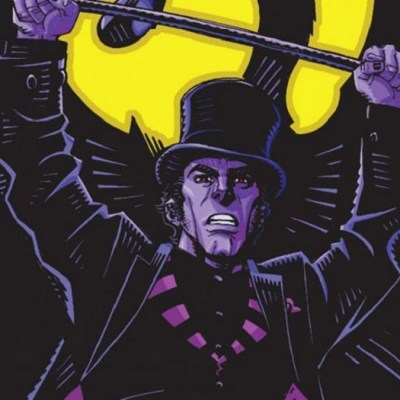How Stargirl Finally Brings the Green Lantern to the DC TV Universe
The Green Lantern has finally arrived in the DC TV universe - just not in the way many people likely expected.

The following contains Stargirl spoilers.
Stargirl Season 2 Episode 2
Every fan of the DC TV universe has been waiting for what feels like forever to see some form of the Green Lantern pop up on our screens. Arrow’s John Diggle has felt like the most likely candidate, ever since he found a strangely glowing green box in that show’s series finale and then proceeded to bounce through almost every other superhero series on the network this year, dropping awkward hints about inexplicable headaches and destiny along the way.
Well, sorry, Diggle, but it turns out that it’s actually Stargirl that has beaten its fellow CW series to the punch, introducing a new Green Lantern in “Summer School: Chapter Two” that’s basically nothing like anyone expected: A teenage girl.
Jennie-Lynn Hayden is the daughter of former Green Lantern Alan Scott – gifted with her father’s old ring as she ages out of the foster system she appears to have grown up in – she doesn’t know much yet about what it means to be a superhero or how her particular powers even work. (Or what happened to the long-lost brother she initially thought the ring was taking her to find.) And though her introduction in last week’s episode involved breaking into the Whitmore-Dugan residence and committing some petty theft, we quickly learn that she’s far from another Rick Tyler-esque delinquent.
No, Jennie’s foster experience has molded her into an overachiever, the sort of aggressive people pleaser who acts like everything’s fine if only so that everyone around her won’t notice that she herself is most definitely not. Her uber helpful houseguest act, her overly performative pancake breakfast, her immediate fawning over Pat and his place in the original Justice Society of America, her super sweet persona comes off as an uncomfortable mix of awkwardly genuine and painfully try-hard, so friendly and saccharine that it almost feels like her behavior has to be a front in some way.
And it is, to some extent, in the sense that it’s all part of a larger mask that Jennie has taught herself to wear. “Don’t try so hard to be perfect. You don’t have to be for people to like you,” Mrs. Ordway, the woman who runs Jennie’s group home tells her early in “Summer School: Chapter Two”. But that’s clearly how this girl has learned to survive, by being so good, so helpful, and so relentlessly positive that no one will ever bother to look close enough to notice the pain and rage she carries inside. Pat does, of course, because he’s Pat. And because he’s seen a variation of this story before, in his own stepdaughter.
So much of Courtney’s arc last season was about making peace with the idea that she was worthy of wielding the Cosmic Staff even if she wasn’t Starman’s actual daughter, that she could still be a hero on her own terms. It’s natural that Jennie’s arrival – and the fact that she seems so close to what Courtney initially dreamed that she herself as, a legacy hero destined to lead the way the man she believed to be her father once was – upsets her carefully won emotional status quo. Courtney’s desperate jealousy feels honest in a way that shows like this don’t often manage and, more importantly, Stargirl doesn’t judge or shame her for those feelings, merely allows her to work through them on her own. (With the aforementioned insight from Pat, of course.)
Part of the reason Stargirl is so good is that it is a superhero series starring a teenage girl that realizes how important it is to actually tell stories about teenage girls, rather than simply transpose adult problems onto Blue Valley’s younger residents. Sure, these girls all act wise beyond their years in the way that CW heroines often do, but Stargirl never forgets that they actually aren’t. While they are all certainly capable of both doing great things and making difficult choices, these are also young women who are still in the process of figuring out who they are – and who they want to become.
From impulsive Courtney to socially awkward Beth, furious Yolanda, and aggressively Type-A Jennie, this is a show that understands that the experience of teenage girls is vast and varied and the way they interact with one another should reflect that reality. Even badass supervillain Cindy Burman is, at heart, just a girl who is desperate to have someone in her life that actually cares about her for her own sake. And it’s precisely these human elements that ultimately make all these characters compelling – after all, Courtney may be able to wield the Cosmic Staff, but her true superpower is her ability to see everyone around her as their best selves.
In the world of Stargirl, it makes perfect sense that Jennie’s lantern is not only fueled by her emotions, but reveals them as well, a mirror that reflects the anxiety, frustration, and fear she works so hard to conceal from the world. It can literally explode if those feelings get too big and rain destruction on those closest to her – a metaphor for teenage emotions that is probably a bit on the nose, but one that we all probably remember from our own days in high school. But sometimes, when Jennie actually lets those feelings out, it turns out that she can fly. (Literally, of course, because this is a superhero show.)
The decision to have Jennie depart Blue Valley essentially immediately after gaining a modicum of control over her powers is annoying if only because it’s so clear that Stargirl has barely scratched the surface of her character and what her relationship to the new JSA will look like. It seems obvious, of course, that she’ll be back, and it’s not like this season doesn’t have enough going on right now, what with the arrival of Shade and Cindy’s struggles to control whatever body sharing arrangement she seems to have struck with Eclipso. But we wanted so long to see a Green Lantern on this canvas – surely we can all be forgiven for wanting to see more of her, as soon as possible.


